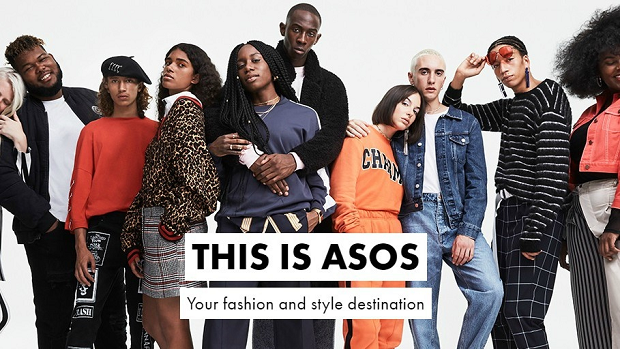Asos has more than tripled first-half profits to a record £106m as the online retailer continues to benefit from the pandemic.
The fashion and beauty seller also said it was likely to make £30m more annual profit than previously anticipated after the pandemic shift towards shopping online, particularly in the UK and most of Europe.
The company, which snapped up the Topshop, Topman, Miss Selfridge and HIIT brands earlier this year following the collapse of Sir Philip Green’s Arcadia empire, reported a 24% increase in revenue during the six months to 28 February.
Asos added one and a half million customers in the past six months, giving it a total of 24.9 million. Profits jumped to £106.4m, up from £30.1m a year earlier.
Chief executive Nick Beighton said its 20-something core market normally bought clothes for going out. But the company’s swift “pivot” to casual clothing paid off, with surging sales, profits and customer numbers.
Beighton told a conference call that under lockdown, there had been a greater emphasis on activewear, casual wear and beauty products.
Asos had “quickly pivoted the customer offer to meet demand” in those areas, he said, with jersey tops and casual bottoms proving strong sellers.
Mr Beighton said Asos was expecting a “shift back to occasion wear” as lockdown restrictions eased. This would begin with daywear, then evening wear, he said.
“During that time, flexibility will be vital for us,” he added.
It calculated that the company had enjoyed a pandemic benefit of £48.5m but warned that sum was likely to unwind as coronavirus restrictions ease and life begins to return to normal.
Arcadia brand relaunch
The company relaunched the Arcadia brands just three weeks after completing the £330m deal, which included unsold stock, and reported “great early customer momentum”. Only 300 of the 2,500 staff were retained as stores were cast aside.
ASOS was yet to decide whether to reopen the flagship Topshop store in London’s Oxford Street – a move, if realised, that would give ASOS its only exposure to physical retail space.
Beighton told investors: “The swift integration of the Topshop brands and the impressive early customer engagement is also especially pleasing.
“Looking ahead, while we are mindful of the short-term uncertainty and potential economic consequences of the continuing pandemic, we are confident in the momentum we have built, and excited about delivering on our ambition of being the number one destination for fashion-loving 20-somethings.”
Industry comment
Tjeerd Brenninkmeijer EVP EMEA at Bloomreach, said: “With brick-and-mortar stores being shut most of the year, consumers have had to get their retail therapy primarily online for the last 12 months. It is no surprise to see the established online players, benefit from this change in consumer behaviour. On the other hand, retailers that are still heavily reliant on their brick and mortar should see these results as a warning that their business model needs to adjust to a world where consumers are more likely to buy products online. These results should give retailers confidence about their future revenue – as long as they think digital-first.
The move to online has been happening for years, and the lockdowns of 2020 have only helped accelerate that shift. Today, retailers shouldn’t rely on the hope that the high street will go back to normal once the restrictions are over. Instead, retailers of all sizes and across all categories would benefit from having a robust, targeted online presence that enables their audiences to get the products they’re looking for in the channels they want to use.”
Hugh Fletcher, Global Head of Consultancy and Innovation at Wunderman Thompson Commerce, said: “Asos’ interim results are unsurprising with the high-street closing its doors due to the pandemic and customers looked for alternative ways to update their wardrobe – and with Asos offering over 800+ brands on their site, it was a no-brainer for many to shift online. Moreover, consumers now expect retailers to have reliable online platforms and it’s no longer OK to be unprepared. Asos’ acquisition of Topshop earlier this year was evidence enough that the tables have turned in favour of the digital natives. It’s no wonder, then, that the popularity of fast fashion brands and online-only platforms, such as Boohoo and Asos, has skyrocketed; almost half (45%) of all fashion shoppers now purchase via digital pureplays, such as ASOS and Boohoo.
“However, if retailers and brands want to compete in the current market, one that is eCommerce first, they can no longer expect shoppers to forgive them for slow and unreliable services. This is especially true as two-thirds (69%) of fashion spending now takes place online and six-in-ten (63%) fashion shoppers are now more likely to buy online now than they were before the pandemic. There is a lot to be learned from how exceptionally well Asos has built its online offering. An easy-to-use UX design, affordable next-day delivery and increasing click-and-collect options all offers customers ease and efficiency. Asos’ breadth and agility also caters to fashion consumers who want ranges to change 17 times a year; strengthening their customer loyalty.
“And as a business, it has kept Asos’ revenue high and its reputation second to none in online fashion. It offers a stark warning to other retailers who fail to innovate and establish a digital offering in the same way.”

